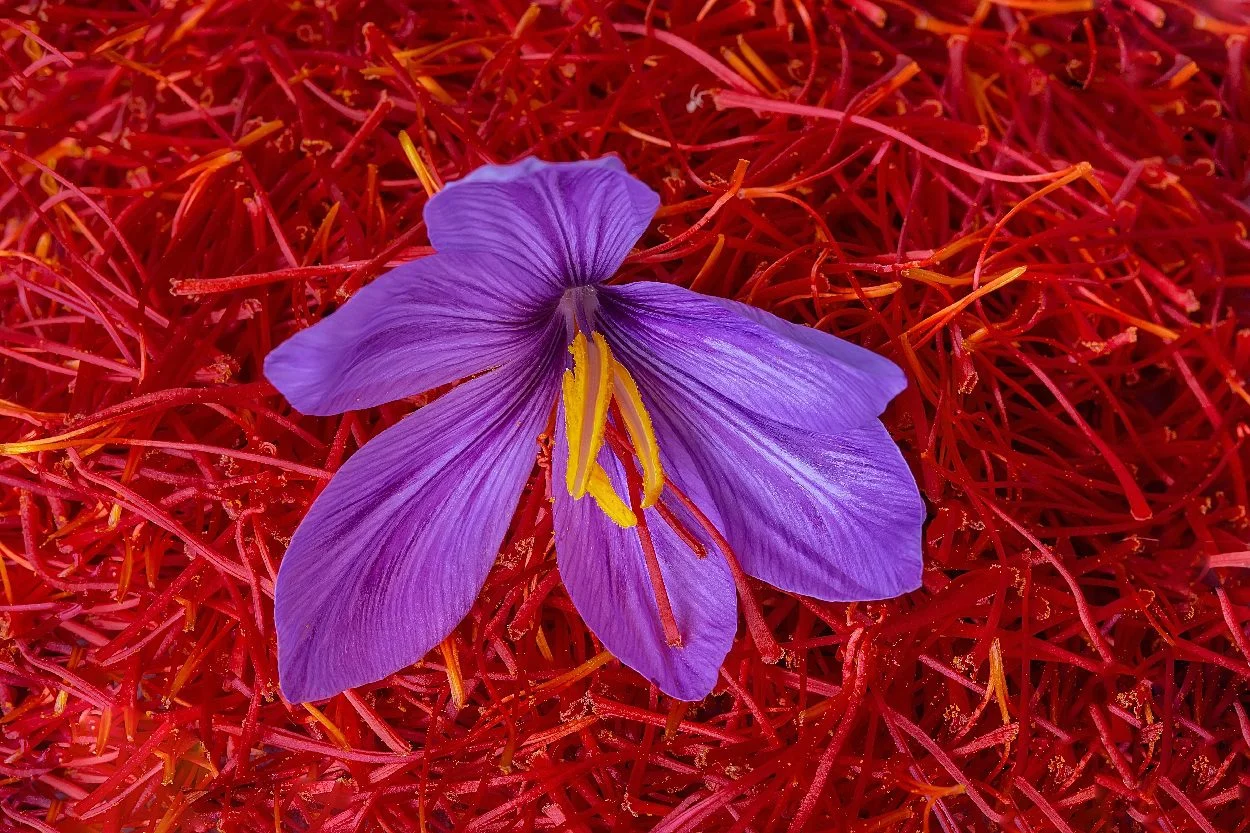Saffron, the world’s most expensive spice, is extracted from the flowers of the saffron crocus, Crocus sativus.
It has been grown for thousands of years in the Mediterranean region. But when and where was saffron first domesticated by our ancestors? In a review in Frontiers in Plant Science, researchers conclude that lines of evidence from ancient art and genetics converge on the same region.
“Both ancient artworks and genetics point to Bronze Age Greece, in approximately 1700 BCE or earlier, as the origin of saffron’s domestication,” said Ludwig Mann, one of the leading authors and a PhD student at Technische Universität Dresden, Germany.
The genus Crocus, with approximately 250 species, ranges from South and Central Europe and North Africa to Western China. Unlike domesticated saffron, these species reproduce sexually in the wild. The first known use by humans of wild crocuses was as pigment for cave paintings, approximately 50000 years ago in today’s Iraq. Ancient texts from Sumer, Assyria, and Babylonia also describe the use of wild crocuses in medicine and dye.
In contrast, domesticated saffron doesn’t grow in the wild, and can only be propagated asexually with human help, by dividing its underground ‘corms’ ̶ stem-like storage organs. The process was first described by the Greek philosopher Theophrastus in the fourth to third century BCE. Today, domesticated saffron is grown around the globe, for use in cooking and perfumes and as a yellow dye. Between 15000 and 16000 flowers, requiring between 370 and 470 person-hours to collect, yield a single kilo, worth between $1300 and $10000.
“Finding out where and when saffron was first domesticated isn’t straightforward: the species is difficult to study genetically, because it has three copies of every chromosome instead of the usual two, and a large genome containing a high percentage of difficult-to-sequence repetitive DNA,” said leading author Seyyedeh-Sanam Kazemi-Shahandashti, a PhD student at the Institute of Bio- and Geosciences of the Forschungszentrum Jülich, Germany.
“As there are no ancient crocus remains preserved from ancient times, we here revisit ancient artworks that depict saffron-like plants. We expected that these could point us to specific regions.”
The authors argue that artworks from the Minoan civilization of ancient Greece are likely the oldest to depict domesticated saffron. For example, the dense patches of crocus flowers on the fresco ‘The Saffron Gatherers’ from the island of Santorini (approximately 1600 BCE) suggest cultivation. Another fresco on the same island, ‘The Adorants’, shows flowers with long, dark-red stigmas which overtop dark violet petals, typical of domesticated saffron. Flowers with these traits are also depicted on ceramics and cloth from Bronze Age Greece, and symbolically rendered in the ideogram for saffron in the ancient Linear B script. In Egypt, tombs from the 15th and 14th centuries BCE depict how ambassadors from Crete brought tribute in the form of textiles dyed with saffron.
An origin in Bronze Age Greece agrees with results from genetic studies from 2019, which showed that C. cartwrightianus, which only occurs in mainland Greece and Crete, is saffron’s closest wild relative.
The authors believe that the modern saffron crocus with its three genomes arose naturally from the wild, either exclusively from C. cartwrightianus or from hybrids between C. cartwrightianus and another crocus species. The saffron crocus would then have been retained by the Bronze Age Greeks because of its superior qualities as a spice.
The authors will continue to trace saffron’s properties, said final author Dr Tony Heitkam, leader of the Plant Genomics group at Technische Universität Dresden: “Around the globe today, all saffron crocuses are effectively clones dating back to saffron’s emergence in ancient Greece. Nevertheless, despite sharing the same genome, saffron can have different properties depending on the region. We have started to investigate the molecular causes, in particular so-called ‘epigenetic’ differences, for this regional variation.”
Header Image Credit : Shutterstock





